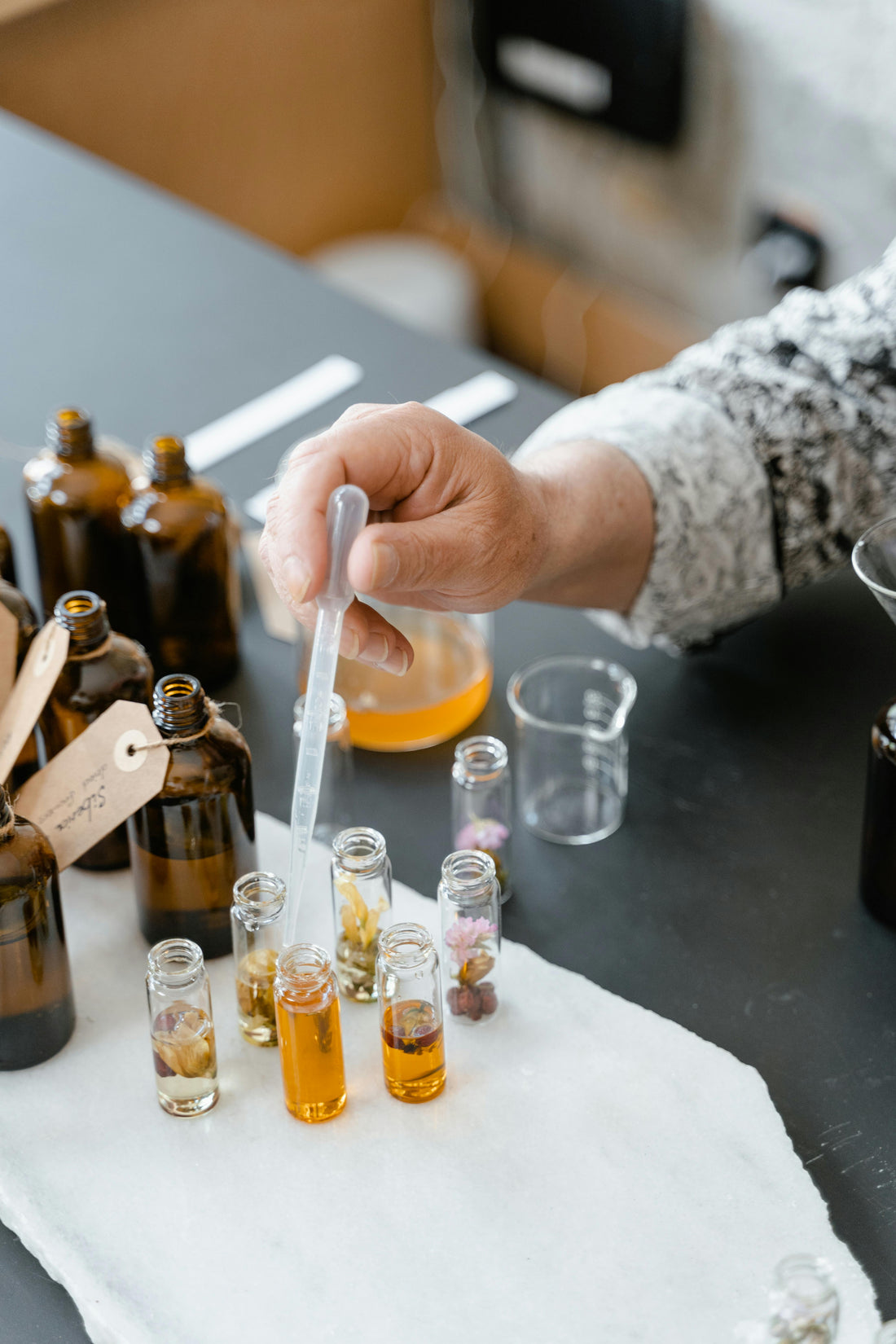
DIY Perfume: How to Create Your Own Signature Scent at Home
Have you ever wished you could bottle your favorite memories, emotions, or a place that holds a special meaning to you? With a DIY perfume, you can! Crafting your own signature scent is not only a creative process, but it also allows you to personalize a fragrance that resonates with your unique personality and style.
In this blog, we’ll guide you through the art of perfume-making, from understanding fragrance notes to blending your own bespoke scent right at home. Whether you’re looking for a fun DIY project or the perfect gift for a loved one, this is your chance to craft something truly personal and meaningful.
Understanding Fragrance Notes
Before we dive into the process, it's important to understand the basics of perfume composition. Perfumes are made up of three layers of scents, known as fragrance notes. Together, these notes create the depth and complexity of your perfume:
-
Top Notes: These are the first scents you smell after applying the perfume. They are usually light and refreshing, lasting only about 10-15 minutes before fading away. Common top notes include citrus fruits (like lemon, lime, or bergamot), herbs (like basil and lavender), and light florals.
-
Heart (Middle) Notes: After the top notes evaporate, the heart notes start to develop. These are the core of the fragrance and tend to be more rounded and full-bodied, lasting for several hours. Common heart notes include floral scents (like rose, jasmine, and ylang-ylang) and spices (like cinnamon or cardamom).
-
Base Notes: The base notes are the foundation of the perfume. They emerge after the heart notes dissipate and give the fragrance depth, richness, and staying power. Base notes often include heavier, longer-lasting scents like sandalwood, vanilla, amber, and musk.
Gather Your Ingredients
To make your own DIY perfume, you'll need a few key ingredients. Most of these can be found online or at local health and wellness stores:
-
Essential Oils: These are the building blocks of your perfume. Choose a variety of essential oils for each of the three fragrance layers (top, heart, and base notes). The possibilities are endless, so choose scents you love!
-
Carrier Oil or Alcohol: Perfumes need a base, and this is where carrier oils or alcohol come in. Common carrier oils include jojoba, sweet almond, or fractionated coconut oil. Alternatively, you can use vodka or a perfumer's alcohol for a lighter, faster-drying perfume.
-
Glass Perfume Bottle: A small glass bottle with a dropper or rollerball is ideal for storing your perfume.
-
Pipettes or Droppers: These will help you measure out your essential oils.
-
Optional Add-ins: You can personalize your perfume even further by adding dried flowers, herbs, or small gemstones to the bottle for a touch of elegance
Blend Your Essential Oils
Using pipettes or droppers, start by adding 10-15 drops of each of your selected base notes into your perfume bottle. Next, add your heart notes, followed by your top notes. Shake the bottle gently after adding each layer to blend the oils.
You can experiment with the ratio of oils, adjusting the number of drops based on how strong or subtle you want each layer to be. Keep a notepad nearby to jot down your recipe for future reference.
Step 1: Add a Carrier Oil or Alcohol
Once your essential oils are blended, fill the rest of the bottle with your chosen carrier oil or alcohol. If using oil, make sure it’s a light, unscented option like jojoba oil, which won't interfere with the fragrance. If using alcohol, opt for vodka or perfumer’s alcohol to ensure it evaporates cleanly on the skin.
Leave a little room at the top of the bottle to allow the ingredients to mix.
Step 2: Let It Mature
Like a fine wine, perfume improves with time. Cap the bottle tightly and let your perfume sit in a cool, dark place for at least 48 hours to a week. This allows the essential oils to blend and mature, resulting in a more well-rounded fragrance.
Step 3: Test and Adjust
After your perfume has matured, test it by dabbing a small amount on your wrist. See how the scent develops over time and adjust if needed. If the perfume feels too strong, you can dilute it with more carrier oil or alcohol. If it’s too light, add a few more drops of your essential oils, focusing on the heart and base notes for more depth.
Tips for a Perfect DIY Perfume
-
Start Small: If you're new to perfume-making, start with small batches to experiment with different scent combinations. This way, you can easily adjust without wasting ingredients.
-
Keep it Balanced: Don't overpower your perfume with too much of one oil. A balanced blend will give you a more harmonious fragrance.
-
Layer Scents: Try applying unscented lotion before applying your solid or oil-based perfume to make the fragrance last longer.
Create a Perfume That's Uniquely Yours
The beauty of DIY perfume is that you’re not bound by commercial fragrances. You have complete control over every note and can craft something that speaks to your individuality. Whether you're after a floral, citrusy, woodsy, or spicy scent, the options are endless. Plus, by choosing natural ingredients, you can avoid synthetic chemicals and tailor your perfume to your skin's sensitivity.
Your personal signature scent is just a few drops away, ready to capture your essence and express your individuality. So, why not embark on this creative journey and make your own DIY perfume today?
Are you ready to create your signature scent? Share your creations with us and explore more DIY perfume tips with True Born.
